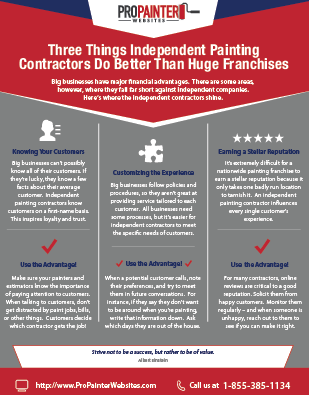Discover Just How Seasonal Impacts Can Impact The Efficiency Of Commercial External Paint And Find Out The Most Desirable Times To Guarantee Long Lasting Results For Your Project
Discover Just How Seasonal Impacts Can Impact The Efficiency Of Commercial External Paint And Find Out The Most Desirable Times To Guarantee Long Lasting Results For Your Project
Blog Article
Written By-Regan Whalen
When you're planning an industrial external paint job, seasonal variables can make or break your results. You'll want to take into consideration how temperature level and humidity impact paint application and drying times. Picking the right season can guarantee your paint sticks appropriately and lasts much longer. Yet which seasons are absolutely the best for this sort of work? Allow's explore the key elements that can influence your task's success.
The Effect of Temperature on Paint Application
When you're intending an industrial outside painting project, the temperature can substantially affect how well the paint adheres and dries.
Ideally, you intend to repaint when temperature levels vary in between 50 ° F and 85 ° F. If it's also cold, the paint may not treat appropriately, causing issues like peeling off or breaking.
On the other side, if it's also hot, the paint can dry out also swiftly, avoiding correct adhesion and resulting in an uneven coating.
You should also take into consideration the moment of day; morning or late afternoon supplies cooler temperatures, which can be much more beneficial.
Constantly examine the supplier's referrals for the details paint you're using, as they frequently provide guidance on the excellent temperature array for optimum outcomes.
Humidity and Its Effect on Drying Times
Temperature isn't the only ecological factor that affects your commercial outside painting project; moisture plays a significant role also. https://www.chicoer.com/2023/03/25/painting-the-town-green can decrease drying times drastically, affecting the total top quality of your paint job.
When the air is saturated with wetness, the paint takes longer to cure, which can lead to issues like inadequate attachment and a greater threat of mold development. If you're repainting on a specifically damp day, be prepared for extended delay times between coats.
It's critical to monitor local climate condition and plan accordingly. Preferably, aim for humidity degrees between 40% and 70% for ideal drying.
Keeping these consider mind guarantees your job remains on track and provides a lasting coating.
Best Seasons for Commercial Exterior Paint Projects
What's the very best time of year for your business external paint jobs?
Spring and early autumn are normally your best options. Throughout these periods, temperatures are light, and humidity degrees are often lower, producing suitable conditions for paint application and drying out.
Stay clear of summertime's intense heat, which can trigger paint to completely dry as well quickly, leading to poor bond and surface. In a similar way, winter's chilly temperatures can hinder correct drying out and healing, taking the chance of the long life of your paint task.
Aim for days with temperatures between 50 ° F and 85 ° F for optimum results. Remember to check the neighborhood weather report for rain, as wet conditions can wreck your project.
Planning around these factors ensures your painting project runs smoothly and lasts much longer.
Final thought
Finally, intending your industrial exterior paint jobs around seasonal considerations can make a significant difference in the end result. By organizing work throughout the excellent temperature levels and moisture levels, you'll make certain much better bond and drying times. Bear in mind to watch on local weather report and select the right time of year-- springtime and early autumn are your best bets. Taking Read Far more will help you attain a long lasting and expert coating that lasts.
